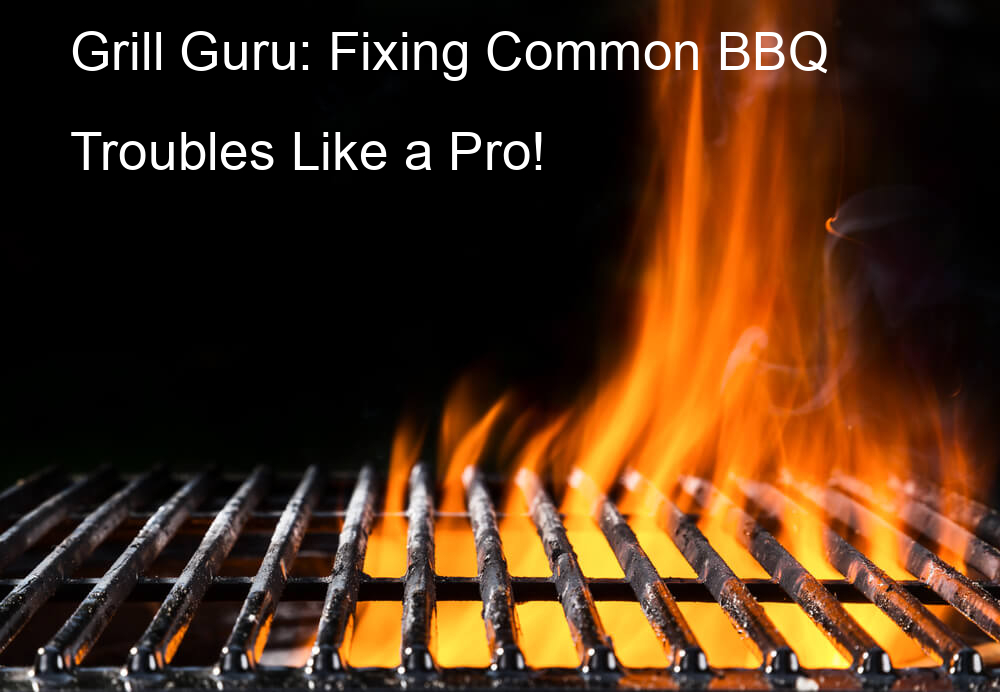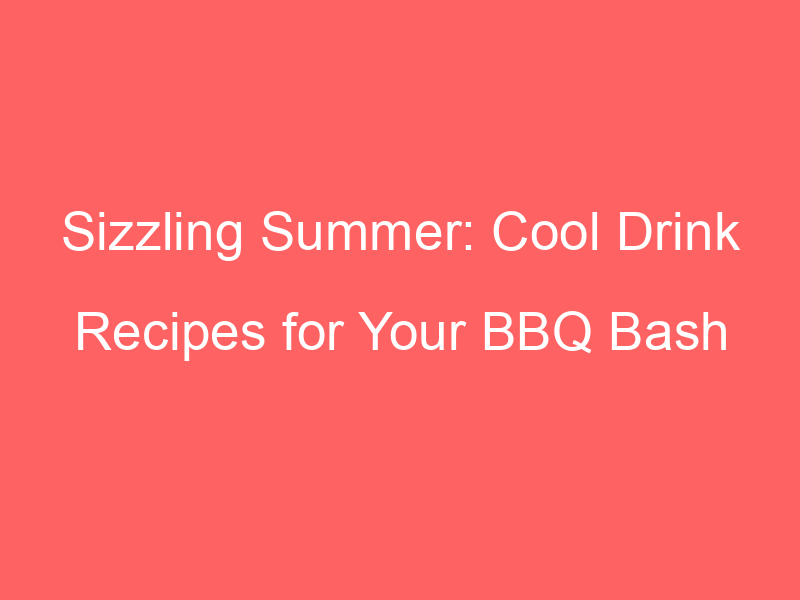Introduction to Grill Troubleshooting
Grilling is an art that many of us enjoy, but like any other appliance, grills can also face issues. This is where the need for grill troubleshooting comes into play. In this section, we will delve into the importance of grill maintenance and identify common grill issues.
- Understanding the Importance of Grill Maintenance
- Identifying Common Grill Issues
Maintaining your grill is crucial for its longevity and performance. Regular maintenance ensures that your grill remains in top condition, reducing the chances of unexpected breakdowns. It also helps in maintaining the flavor of your food, as a clean grill prevents old residue from tainting your meals. According to a Wikipedia article, regular grill maintenance can extend the life of your grill by up to 50%.
Grill issues can range from minor inconveniences to major problems that can hinder your grilling experience. Some common grill issues include uneven heating, flare-ups, and difficulty in lighting the grill. Identifying these issues early can save you from costly repairs and ensure a smooth grilling experience. We will discuss these issues in detail in the next sections.
By understanding the importance of grill maintenance and being able to identify common grill issues, you can ensure that your grill remains in top condition and your grilling experience remains enjoyable. So, let’s dive deeper into the world of grill troubleshooting.
Common Grill Issues and Solutions
When you’re a grill enthusiast, nothing can ruin your day faster than running into a problem with your grill. But don’t worry, we’ve got you covered. Here are some common gas grill issues and their solutions.
Gas Grill Troubleshooting
Gas grills are popular for their convenience and control, but they can also have their own unique set of problems. Let’s take a look at some common issues and how to fix them.
- Problem: Low flame or lack of heat
- Solution: Check the gas tank and regulator
- Problem: Uneven heating
- Solution: Clean the burners and ensure they are properly aligned
This is a common issue that can be very frustrating. You’re ready to start grilling, but the flame is just not hot enough. This can result in undercooked food and a longer cooking time.
The first thing you should do is check your gas tank. Make sure it’s not empty. If your tank is full, the problem might be with the regulator. The regulator controls the gas pressure, and if it’s not working properly, it can result in a low flame. Try resetting the regulator by disconnecting it and then reconnecting it. If this doesn’t work, you might need to replace it.
Uneven heating can result in some parts of your food being overcooked while others are undercooked. This is not only frustrating, but it can also be a health risk.
Uneven heating is often caused by dirty or misaligned burners. Cleaning your burners can help ensure that the gas flows evenly. Also, make sure that your burners are properly aligned. If they’re not, they can create hot and cold spots on your grill.
Remember, regular maintenance and cleaning can prevent many common grill issues. So, keep your grill in top shape and happy grilling!
Charcoal Grill Issues
Charcoal grills are popular among grilling enthusiasts for the unique flavor they impart to food. However, they can present a few challenges. Let’s explore some common issues and their solutions.
-
Problem: Difficulty controlling temperature
One of the most common problems grillers face with charcoal grills is controlling the temperature. It can be tricky to get the heat just right, leading to undercooked or overcooked food.
Solution: Learn to manage the air vents
Did you know that the air vents on your charcoal grill play a crucial role in temperature control? Opening the vents allows more oxygen in, which increases the heat. Conversely, closing the vents reduces the oxygen supply, lowering the temperature. Practice adjusting the vents to get a feel for how they affect the heat level. Learn more about charcoal grill temperature control here.
-
Problem: Food sticking to the grill
There’s nothing more frustrating than grilling a perfect steak or burger, only to have it stick to the grill grates. This not only ruins the presentation of your food but can also lead to uneven cooking.
Solution: Clean and oil your grill before use
To prevent food from sticking, make sure your grill is clean before you start cooking. After cleaning, apply a thin layer of cooking oil to the grates. This creates a non-stick surface that makes flipping and removing your food a breeze. Find more grill maintenance tips here.
Outdoor Grill Problems
Outdoor grilling is a favorite pastime for many, but it comes with its own set of challenges. This section will cover some of the most common outdoor grill problems and offer solutions to help you overcome them.
- Dealing with weather conditions
- Choosing the right location for your grill
- Protecting your grill from rust and damage
Weather conditions can greatly affect your grilling experience. Rain, wind, and extreme temperatures can all interfere with your grill’s performance. It’s important to monitor the weather and adjust your grilling plans accordingly. For example, if it’s windy, you may need to increase the heat on your grill to maintain a consistent temperature. If it’s raining, consider using a grill cover or moving your grill to a covered area if possible. Here is a useful resource on how weather conditions can affect grilling.
Location is key when it comes to outdoor grilling. Your grill should be placed in a well-ventilated area, away from any flammable materials. It should also be on a flat, stable surface to prevent it from tipping over. If you’re grilling on a deck or patio, make sure to use a grill pad or mat to protect the surface from heat and grease stains. Check out this Wikipedia article for more information on grill safety.
Grills are often exposed to the elements, which can lead to rust and damage over time. To protect your grill, make sure to clean it regularly and thoroughly, removing any food particles or grease that could cause corrosion. It’s also a good idea to cover your grill when it’s not in use to protect it from rain and snow. Regular maintenance and proper storage can significantly extend the lifespan of your grill. For more tips on how to care for your grill, visit this Wikipedia page.
Grill Maintenance Tips
Keeping your grill in top-notch condition is essential for its longevity and performance. Here are some key maintenance tips to help you get the most out of your grill:
- Regular cleaning and inspection: Cleaning your grill after each use prevents build-up of grease and food particles, which can cause flare-ups and uneven heating. Use a grill brush to clean the grates and a damp cloth to wipe the exterior. Regular inspection can help you spot any potential issues early, such as rust or loose parts. Wikipedia provides more information on grill maintenance.
- Proper storage during off-season: If you’re not using your grill during the colder months, it’s important to store it properly to protect it from the elements. Cover your grill with a heavy-duty grill cover and store it in a dry, sheltered location. If possible, bring it indoors or in a garage or shed.
- Replacing worn out parts: Over time, parts of your grill may wear out and need to be replaced. This includes the grates, burners, and heat tents. Regularly check these parts for signs of wear and tear and replace them as needed to ensure your grill continues to function efficiently.
By following these grill maintenance tips, you can ensure your grill stays in great shape and continues to provide you with delicious meals for years to come.
Grill Repair Guide
Grill maintenance is not just about cleaning and seasoning, but also about knowing how to replace faulty parts. Here’s a simple guide to help you through the process.
Replacing Grill Parts
Replacing grill parts can seem daunting, but with a little guidance, you can do it yourself. Here are the steps you need to follow:
- Identifying the Faulty Part
- Choosing the Right Replacement
- Proper Installation of the New Part
First, you need to identify which part of your grill is not working properly. This could be anything from the burners to the ignition system. You can identify the faulty part by observing the symptoms. For example, if your grill is not heating up properly, it could be due to a faulty burner. Wikipedia has a comprehensive list of grill parts and their functions that can help you in this process.
Once you’ve identified the faulty part, the next step is to find a suitable replacement. It’s important to choose a part that is compatible with your grill model. You can usually find this information in your grill’s manual or on the manufacturer’s website. Remember, using a wrong part can further damage your grill or even pose a safety risk.
After purchasing the replacement part, it’s time to install it. Make sure to follow the installation instructions carefully. If you’re not comfortable doing this yourself, it’s best to hire a professional. However, with a little patience and attention to detail, you can successfully replace the faulty part and get your grill back in working order.
Remember, regular maintenance and timely replacement of faulty parts can greatly extend the lifespan of your grill. So, don’t ignore those minor issues, they could turn into major problems if left unattended.
DIY Grill Repairs
Grilling is a beloved pastime for many, but it can be frustrating when your grill isn’t working as it should. Before you call in a professional, there are some simple fixes you can try at home. However, it’s important to know when it’s time to call in the experts. Let’s explore both scenarios.
- Simple fixes you can do at home
- When to call a professional
Many common grill issues can be resolved with a little DIY know-how. For instance, if your grill isn’t heating up properly, it might be due to a blocked burner. You can easily clean the burner with a wire brush to remove any debris. Similarly, if your grill isn’t lighting, it could be due to a faulty ignition system. In this case, you can try replacing the batteries or cleaning the ignition system with a soft brush.
Another common issue is uneven heating. This could be due to a variety of reasons such as a blocked burner, a gas leak, or even a faulty regulator. You can try cleaning the burner, checking for gas leaks, or replacing the regulator to resolve this issue.
Remember, safety should always be your priority when working with grills. Always disconnect the gas and let the grill cool down before you start any repair work. If you’re unsure about any step, it’s best to consult the grill’s manual or seek professional help.
While many grill issues can be fixed at home, there are some problems that require professional help. For instance, if you smell gas even when your grill is off, it could be a sign of a gas leak. This is a serious issue that should be addressed by a professional immediately.
Similarly, if your grill isn’t heating up even after you’ve cleaned the burners and checked the gas supply, it could be due to a faulty gas valve or regulator. These are complex parts that should be handled by a professional.
Remember, it’s always better to be safe than sorry. If you’re unsure about any repair work, it’s best to call in a professional. After all, a well-maintained grill can provide years of delicious meals and memorable moments.
Conclusion: Become a Grill Guru
As we wrap up our comprehensive guide on grills, it’s time to recap what we’ve learned and share some final tips to help you become a true Grill Guru. With the knowledge you’ve gained, you’ll be able to tackle any grill issue that comes your way.
- Recap of grill troubleshooting guide
- Final tips for fixing grill problems
We’ve covered a wide range of topics, from understanding common grill issues and their solutions to tackling outdoor grill problems. We’ve also provided a detailed grill maintenance guide to help you keep your grill in top shape. Lastly, we’ve given you a step-by-step grill repair guide to help you fix common problems and keep your grill running smoothly.
Remember, the key to fixing grill problems is to understand the issue at hand and to approach it with patience and the right tools. Always ensure your grill is clean and well-maintained to prevent issues from arising. If a problem does occur, don’t panic. Refer back to our guides and take it one step at a time. With practice and patience, you’ll be a Grill Guru in no time.
Grilling is an art, and like any art, it requires practice and understanding. With the knowledge you’ve gained from this guide, you’re well on your way to mastering the art of grilling. So, go ahead, fire up that grill and let the grilling begin!






